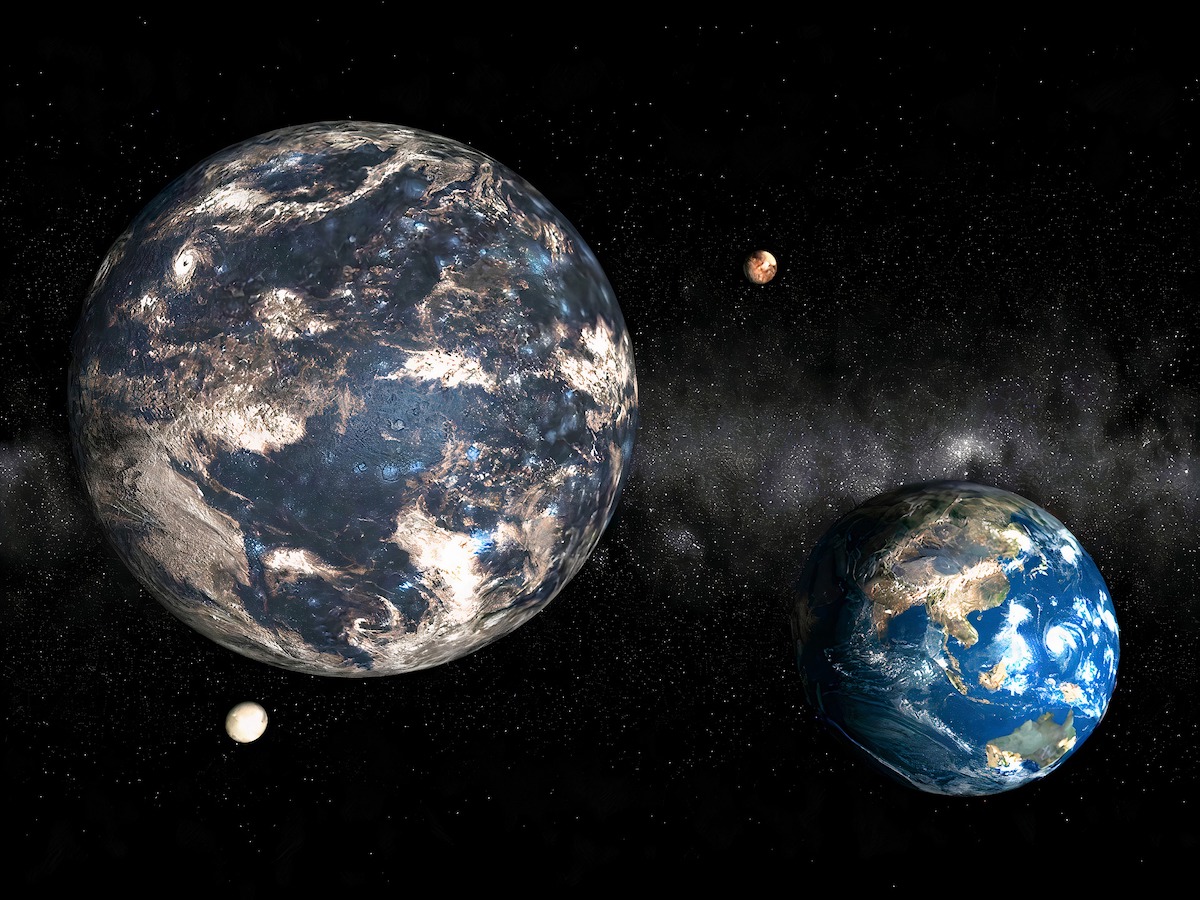 Earth & Space
Earth & Space
Are super-Earths more friendly to life than we thought?
The discovery of planets outside the Solar System began thirty years ago and has been on the rise since, but how much do we know about these planets? Can we find out what they are made of and if they are habitable? Can we use our limited knowledge of the Earth’s interiors to predict the habitability of these faraway planets? Some scientists used laser beams on a piece of iron and did just that.

The inner core of the Earth is a solid spinning ball of mostly iron, almost the size of the Moon. Temperatures on the surface of the inner core can reach close to those at the surface of the Sun. The next layer, the outer core, is in a molten state and is about twice as thick as the inner core. Being a moving fluid, the outer core is home to turbulent currents, which are essentially the same phenomena that cause clouds and storms in our skies and sometimes transform your smooth flight into a bumpy road. However, inside the Earth, not only are the temperatures incredibly high but the pressures are also massive! As a result, the flow of molten metal in the outer core is strong enough to give rise to very powerful electric currents. Strong electric currents, in turn, generate a strong magnetic field which extends all the way into space. This magnetic field, or magnetosphere, not only helps your compass guide you on your hiking trips but also protects the Earth by deflecting away harmful rays from the Sun and outer space, thereby playing a vital role in making life on Earth possible.
Studying the conditions inside the Earth’s core is very difficult. Most of what we know comes from volcanoes that spew out some of the material from the mantle (the layer encompassing the outer core). However, this doesn’t tell us much about the conditions inside the outer core. Recently, with the help of lasers, researchers managed to recreate, and even exceed, the conditions inside Earth’s core, albeit for a tiny fraction of a second.
Until now, a number of experiments have been able to measure the properties of iron but only up to maximum pressures of 290 GPa, where 1 GPa (giga-Pascal) is around ten thousand times atmospheric pressure. Pressures in the Earth’s core can reach around 360 GPa, and the behavior of iron in such extreme conditions is not very well understood – we don’t even know if iron will behave like a solid or a liquid (or something in between) at these pressures. To understand this better, researchers made very precise use of lasers to induce shockwaves in a sample of iron that raised the pressure in the sample up to 1000 GPa for just about 10 nanoseconds – a tiny fraction of a second.
Normally, with an increase in pressure, the particles inside a material would come close together, meaning gases would turn to liquids and liquids to solids. Inside the Earth’s outer core, the liquid iron is under huge pressures and gets compressed as it moves towards the inner core where it solidifies. When iron is exposed to such high pressures in a lab, it transitions from liquid to a mixed state and then finally to a solid. However, in the Earth’s core the metal does not solidify all at once and also not forever because there are other heating processes present which liquidify some of the iron.
Understanding the rate of this solidification process coupled with various other properties of the atomic structure of iron is important as this will help us predict the longevity of a planet’s magnetosphere. Using these observations, it is possible to draw relations between the mass of a super-Earth planet and the time its core would take to solidify. The cores of super-Earth planets, with 4-6 times the mass of the Earth, are predicted to take 30% longer solidify than Earth’s core (which will take about 6 billion years). Researchers suggest that if the outer core remains liquid for longer, then its magnetic field will last longer as well.
Magnetic fields around the Earth are a crucial to supporting life. By studying the properties of iron (a highly abundant metal in the cores of rocky planets) at the extreme pressures and temperatures found inside planet cores, we can shine a light on the evolution of the cores and the magnetic fields that surround these planets. This research presents an initial study and concludes that super-Earths might have longer-lasting magnetospheres which, in turn, could provide longer-lasting shielding to any forms of life on it.
Original Article:
Kraus, R. et al. Measuring the melting curve of iron at super-Earth core conditions. Science 375, 202-205 (2022).Edited by:
Dr. Rik Voorhaar , Senior Scientific Editor
We thought you might like
To See a World in a Grain of Interplanetary Dust
Mar 22, 2019 in Earth & Space | 4 min read by Hope A. IshiiMore from Earth & Space
Volcanic Ash: A Nutrient Boost for Reef-Building Corals
Sep 18, 2024 in Earth & Space | 4 min read by Frank Förster , Tom SheldrakeAmmonia Energy: A Call for Environmental Awareness
Aug 29, 2024 in Earth & Space | 3.5 min read by Matteo Bertagni , Robert Socolow , Amilcare PorporatoLikely increase in coral thermal tolerance at a Pacific archipelago
Dec 29, 2023 in Earth & Space | 3 min read by Liam LachsEarth’s large lakes are shrinking
Dec 27, 2023 in Earth & Space | 3 min read by Fangfang Yao , Ben Livneh , Balaji RajagopalanGas in distant galaxies: mixed or matched?
Nov 22, 2023 in Earth & Space | 3 min read by Tanita Ramburuth-HurtEditor's picks
Trending now
Popular topics


